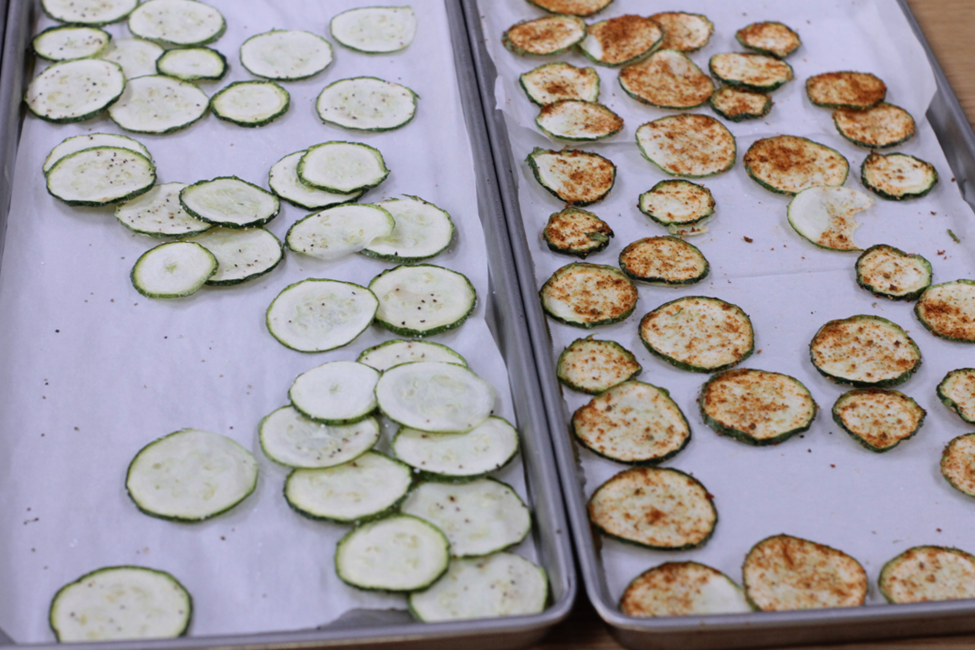Good reasons to freeze-dry
Freeze-drying has long been used by outdoor enthusiasts for lightweight snacks and complete meals on the trail; but did you know freeze-dried foods are also great for quick and healthy snacks, traveling, easy meal preparation, emergency preparedness, and even homemade pet food.
Freeze-drying is a terrific way to reduce food waste and preserve the harvest. You may be asking “What types of food can I freeze-dry?” Fruits, vegetables, meats, dairy products, desserts, and complete meals can all be effectively freeze-dried.

Freeze-drying is a food preservation process, not a food safety process. It will not make unsafe foods safe. It is important to remember that freeze-drying does not destroy enzymes or microorganisms. Enzymes are less active but are still present and can lead to reduced food quality over time. If the goal is long-term storage, consider blanching vegetables and treating fruit that is prone to browning. Microorganisms will become inactive but are not killed.
If raw, fresh produce is contaminated, those same contaminants will be on the food when it is eaten. Special considerations must be made when eating freeze-dried animal products that have not been cooked (eggs, meats, poultry). These foods should be labeled “raw” and must be heat treated prior to consuming.
Good Nutrition
Color, flavor, shape and approximately 90% of the nutritional value of the food are maintained. The freezing process occurs very quickly thus reducing nutrient loss and retaining food quality. The drying process allows the food to be lightweight and shelf stable. While food weight is reduced, the volume of food may not be reduced. Many items retain their shape when freeze-dried. An exception is high-water content liquid items like soup, milk, and eggs which become crumbly and powder-like. These foods are often rehydrated back to their original volume before being consumed.
The calorie content by volume may be similar to the original food item for products that retain their shape, or it may be higher for foods that crumble or become powders. Additionally, salt and sugar become more concentrated, so salty foods will taste saltier and sweet foods will taste sweeter. The vitamin and mineral content will be unchanged. You may need to increase your fluid intake when consuming freeze-dried foods.
Please note that freeze-dried foods are not allowed as cottage foods in Ohio.
These are just a few things to consider as you explore freeze-drying. It is up to you to determine the benefits and drawbacks for you and your family. Please read each of the Freeze-drying: Consider This blog articles for more information!
Freeze-Drying: Consider This – Food Dehydration, Freezing, and Freeze-drying
Stay tuned for the final article in the series!
Resources:
Bhatta S, Stevanovic Janezic T, Ratti C. Freeze-Drying of Plant-Based Foods. Foods. 2020 Jan 13;9(1):87.
Geiger, M. Iowa State University Extension Preserving by Home Freeze Drying Blog. 2023 June 13. https://blogs.extension.iastate.edu/answerline/2023/06/13/preserving-by-home-freeze-drying/
Kupletskaya, M.B., Netrusov, A.I. Viability of lyophilized microorganisms after 50-year storage. Microbiology. 2011; 80 (6): 850.
Yukie Miyamoto-Shinohara, Takashi Imaizumi, Junji Sukenobe, Yukie Murakami, Sugio Kawamura, Yasuhiko Komatsu, Survival Rate of Microbes after Freeze-Drying and Long-Term Storage. Cryobiology. 2000 Nov; 41(3):251.
Written by:
Christine Kendle, Extension Educator, Ohio State University Extension, Tuscarawas County and Kate Shumaker, Extension Educator, Ohio State University Extension, Holmes County.
Assisted by Tiffany Haney, Intern, Stark State University Dietetic Technician Program.
Reviewed by: Ohio State University Extension, Food Preservation Team.
Photo Credit: Laura Halladay, Ohio State University Extension, Greene County